dreifish
Contributor
I have been shooting a Sony RX100 in a Nauticam housing with Inon UWL-H100LD wet lens + dome, 2 Inon +6 UCL-165LD close-up lenses, Nauticam flip adapter, Nauticam lcd magnifier and two Sea&Sea YS-D1 strobes for about a year now. During that time, I've discovered that I enjoy making dramatic photos more so than taking images just to document my dives. I like images on the extremes of the focal range -- really wide angle or (super) macro, with a slight preference for the former. I also enjoy shooting video on occasion. Lately, however, I've started to become frustrated with what I perceive as technical limitations of this set-up. which I would summarize thus:
I have a trip planned to Sipadan in November and I've decided this might be a good opportunity to upgrade to a interchangable lens system. Problem is, which one? I have a budget of around US$5-10k, though cheaper is better if not surrendering much image quality. Given my preferences, if you were in my situation, what system would you buy into? M43, Nikon Crop, Nikon Full-Frame, Canon Crop, or Canon Full frame? Those seem to be the ones that have good wide-angle and macro lens options.
I realize that it's a broad question. I have some observations based on my research so far and some areas I'd like clarification.
For the full frame systems, I would probably go with either the D800 or the 5D Mark III since the d600/610 and 6D seem like they have crappy auto-focus in terms of speed and coverage. Is that right? Also, metal housing prices (I really like my Nauticam housing) are about the same for the upper and lower end models, so not a huge bargain.
For crop sensors, the D7100 looks interesting. Not so enthused about the Canon crop sensor offerings. However, the housing costs for the D7100 are very comperable to the full-frame DSLR housings, so overall savings not to big?
As far as M43, the new OM-D EM-1 looks quite promising, but there's no nauticam housing yet. The Olympus housing might come out in time for my trip however. OM-D EM-5 is another option and a nice bargain right now (body only selling for about US$720 now in Japan, and the housing is $1450). GX7, GH3 are possibly attractive for their video capabilities, but only the latter has a Nauticam housing and it's relatively expensive compared to the EM-5 housing.
So now some questions:
I've attached some of my favorite photos from the RX100. Lest I come across as too negative about it, it's still a capable camera -- I'd just like something a step higher.
- On the wide-angle side, I find that the corners of my images are less sharp than I would like, even when closing the aperture down to 5.6. I would also prefer having a slightly wider lens than the H100, which has a 144 degree (diagonal?) angle of view.
- As for macro, without the close-up lenses, the RX100 sucks. And with the close up lenses (especially both stacked) the working distance is practically non-existent and the focusing is pretty slow.
- I've found that the ability to change lenses underwater isn't as useful as I initially though because it still takes time even with a bayonet mount and carrying all those lenses makes the rig heavy!
- With the UWL-H100, I can only really shoot big schools of fish, reef scenic shots and CFWA -- sharks, mantas and other big fish tend to stay too far away to fill up the screen. I think it might be useful to have a lens suited for big animals -- perhaps something in the 16-35MM range? (i.e. something in the gap between the UWL-H100 and the wide end of the RX100 zoom without a wet lens.
- In general, the RAW files are good, but not as clean and with as much tonal/dynamic range as I'd prefer them. Perhaps I'm spoiled because I shoot with an NEX-7 topside.
- Video is pretty good, but switching between video and photo shooting on the same dive requires too much reconfiguration. Custom white balance takes too many clicks to set, and the highest temperature is limited to 9999K. Red filter eats up a lot of light forcing you to either open the aperture (fuzzy corners) or shoot at higher ISO (bad dynamic and tonal range).
- Trying to get focus on moving fish is usually an exercise in frustration
I have a trip planned to Sipadan in November and I've decided this might be a good opportunity to upgrade to a interchangable lens system. Problem is, which one? I have a budget of around US$5-10k, though cheaper is better if not surrendering much image quality. Given my preferences, if you were in my situation, what system would you buy into? M43, Nikon Crop, Nikon Full-Frame, Canon Crop, or Canon Full frame? Those seem to be the ones that have good wide-angle and macro lens options.
I realize that it's a broad question. I have some observations based on my research so far and some areas I'd like clarification.
For the full frame systems, I would probably go with either the D800 or the 5D Mark III since the d600/610 and 6D seem like they have crappy auto-focus in terms of speed and coverage. Is that right? Also, metal housing prices (I really like my Nauticam housing) are about the same for the upper and lower end models, so not a huge bargain.
For crop sensors, the D7100 looks interesting. Not so enthused about the Canon crop sensor offerings. However, the housing costs for the D7100 are very comperable to the full-frame DSLR housings, so overall savings not to big?
As far as M43, the new OM-D EM-1 looks quite promising, but there's no nauticam housing yet. The Olympus housing might come out in time for my trip however. OM-D EM-5 is another option and a nice bargain right now (body only selling for about US$720 now in Japan, and the housing is $1450). GX7, GH3 are possibly attractive for their video capabilities, but only the latter has a Nauticam housing and it's relatively expensive compared to the EM-5 housing.
So now some questions:
- Does either Canon or Nikon offer a real advantage in terms of full-frame lenses? People seem to shoot the Sigma 15MM fisheye with both, some 16-35MM wide-angle zoom and the 50/60 and 100/105 Macros. All of these lenses seem pretty equivalent between the systems. Is there any reason to choose one over the other? I know Canon has an 8-15 zoom fisheye, but the circular fisheye end seem relatively gimicky and it's not like the Tokina 10-17 where the long end is actually a bit rectilinear on a crop sensor. So does the Canon 8-15 fisheye zoom really add any versitility above and beyond a normal diagonal fisheye?
- The big advantage of the D7100 as I see it is the Tokina 10-17 fisheye lens at the wide-angle end and the 1.5 crop factor for macro. How much extra versitility does the Tokina provide over a fixed fish-eye? Can you use it to take pictures of shier sharks/seals/mantas?
- M43 seems to have a good fisheye, the 7-14, 9-18, and the 60MM macro. Any major disadvantages in the lens lineup when compared to crop/full-frame DSLRs?
- How is the focus speed on these cameras, especially when it comes to moving fish and super-macro? Assuming you use a not-too-bright focusing light, are the M43 cameras notably slower than the DSLRs? And how do the DSLRs rank -- is the 5D mark III better than the D800, or are they comparable? In terms of coverage, the D7100 has wider coverage than the full-frame cameras it seems, but is it equally fast? M43 seems to have the widest coverage.
- Domes. On M43 and for the D7100, it seems you can use a 4" dome with the fisheye lenses. What about the wide-angle zooms 7-14mm, 9-18mm? How big of a dome do those need? And how small of a dome can you get away with on the full-frame cameras?
I've attached some of my favorite photos from the RX100. Lest I come across as too negative about it, it's still a capable camera -- I'd just like something a step higher.
Attachments
-
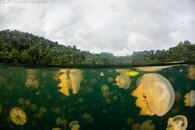 DSC09213.jpg28.8 KB · Views: 169
DSC09213.jpg28.8 KB · Views: 169 -
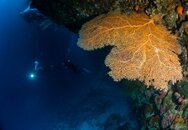 DSC09102.jpg43.1 KB · Views: 167
DSC09102.jpg43.1 KB · Views: 167 -
 DSC09089.jpg10.6 KB · Views: 168
DSC09089.jpg10.6 KB · Views: 168 -
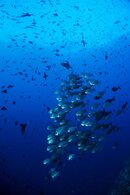 DSC08925.jpg52.2 KB · Views: 175
DSC08925.jpg52.2 KB · Views: 175 -
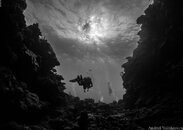 DSC08828.jpg25.9 KB · Views: 175
DSC08828.jpg25.9 KB · Views: 175 -
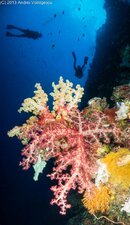 DSC08744-Edit.jpg105.7 KB · Views: 169
DSC08744-Edit.jpg105.7 KB · Views: 169 -
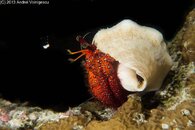 DSC08626.jpg33.3 KB · Views: 154
DSC08626.jpg33.3 KB · Views: 154 -
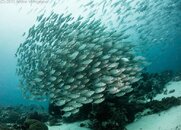 DSC08424.jpg55.6 KB · Views: 161
DSC08424.jpg55.6 KB · Views: 161 -
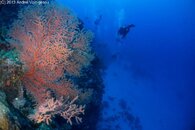 DSC08179.jpg35.2 KB · Views: 160
DSC08179.jpg35.2 KB · Views: 160 -
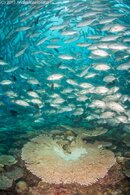 DSC08036.jpg122.5 KB · Views: 166
DSC08036.jpg122.5 KB · Views: 166



